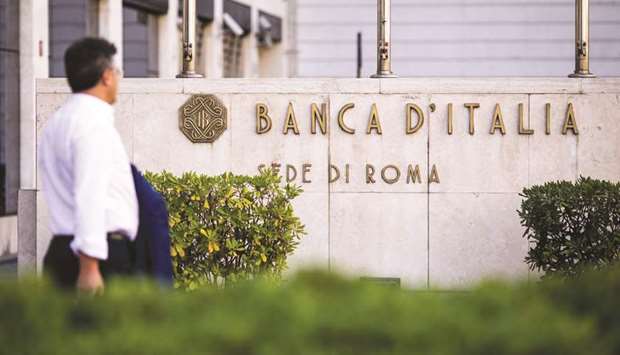Reuters/ Brussels
Public debt in Greece and Italy, the two most indebted countries in the eurozone, grew last year while the bloc as a whole saw its liabilities decrease, the European Union statistics office said yesterday.
Rome’s growing debt, which is also higher than Brussels had predicted, is seen as further stretching EU fiscal rules that require countries with high debts to gradually bring them down.
Italy, whose eurosceptic government adopted free-spending policies last year that have so far had little impact on growth, had debt equivalent to 132.2% of national output in 2018, or €2.3tn ($2.5tn), up from 131.4% in the previous year, Eurostat said.
Up to 0.2% of the Italian debt was due to derivative contracts, which are usually used to hedge against risks but triggered losses for 4.7bn euros in 2018, Eurostat data show.
Other eurozone countries have reduced their debt thanks to derivatives.
Although Rome has decreased its losses on derivatives from the €5.4bn posted in 2017, the negative impact over the country’s debt has exceeded 25bn since 2015, data show.
The European Commission, which monitors eurozone states’ budgets, refrained in December from starting disciplinary steps against Italy over its growing debt. It predicted then that Italian debt would be 131.1% of gross domestic product in 2018 — lower than yesterday’s data showed.
The Commission has said it will reassess Rome’s compliance with EU fiscal rules, including the requirement to cut debt, in June, taking into account the final debt data from Eurostat.
A spokeswoman for the EU executive declined to comment on the new figures released by Eurostat.
She said Brussels’ new evaluation of Italy’s position will also be based on new forecasts due in May of debt developments, and on Italy’s report on its fiscal plans for the next three years which Rome had just submitted.
Italy’s 10-year government bond yield jumped to its highest in seven weeks yesterday, pushed up mostly by unease over government infighting and an upcoming ratings review.
Italy bucked the eurozone trend, as overall debt in the 19-country currency bloc fell to 85.1% of GDP last year from 87.1% in 2017, Eurostat said.
The bloc’s aggregated budget deficit also dropped to 0.5% of GDP from 1.0% in 2017.
The fall coincided with Germany’s reduction of its debt to 60.9% of GDP, from 64.5% in 2017.
The bloc’s largest economy also widened its public surplus to 1.7% of output from 1.0% in 2017.
In Greece, debt climbed to 181.1% of GDP in 2018, the largest ratio in the eurozone.
The increase from 176.2% in 2017 was mostly due to the last instalment of eurozone creditors’ loans as part of the country’s third bailout programme which ended last summer.
The recent exit from the bailout programme exempts Greece from the normal application of EU rules that require countries with public debt above the 60% of GDP threshold allowed by EU law to cut the excess by 5% a year. Cyprus, another of the bloc’s most indebted countries, saw its debt rise to 102.5% of GDP from 95.8%.
Portugal, which was also bailed out during the eurozone’s debt crisis, saw its debt fall to 121.5% of output from 124.8%, while Belgium’s debt declined to 102.0% of GDP last year from 103.4% in 2017.
French public debt was stable at 98.4% of output, while the country’s budget deficit dropped to 2.5% of GDP from 2.8% in 2017.



